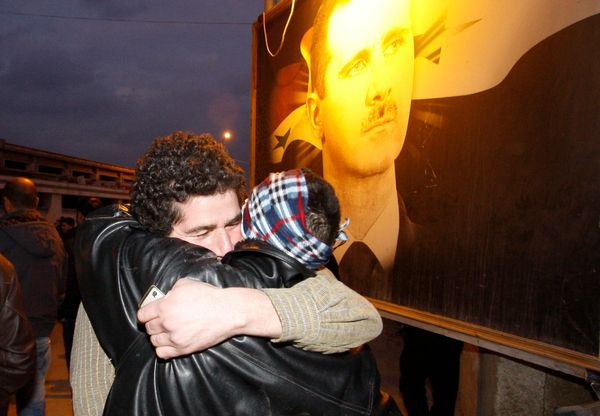
Avengers: Endgame is the climax to over a decade of superhero movies, providing closure for the original six members of the Avengers team and tying-up a number of loose ends in the Marvel Cinematic Universe. As a result and almost by necessity, the film is very long (over 3 hours), which makes its timeline of events slightly confusing.
Spoiler Alert! This article has major spoilers for the plot of Endgame.
Although the story can be hard to follow, some careful planning by the movie’s producers means there aren’t any big or obvious plot holes. I’ve seen the film twice and enjoyed it much more the second time round. One potential explanation is a cognitive phenomenon called ‘processing fluency’, which is when old knowledge makes it easier for the brain to process new information. So when watching a movie or TV show, the narrative might require less mental effort to process if you already understand the plot (READ MORE: Fan Theories Could Help You Get Over ‘Game Of Thrones’).
Time travel is central to the plot of Endgame. While many films and shows in popular culture have gotten it wrong, Marvel gets it right by emphasizing that it’s impossible to change the future by changing the past. In the movie, James Rhodes (War Machine) suggests going back in time to kill Thanos as a baby — before he acquires six cosmic ‘infinity stones’ for the gauntlet that enables him to snap his fingers in Avengers: Infinity War and wipe-out half the population.
But as Bruce Banner (Hulk) tries to explain, “Time doesn’t work that way… If you travel to the past, that past becomes your future, and your former present becomes the past, which can’t now be changed by your new future.” There’s a lot to unpack in those sentences, which is made more confusing by not mentioning ‘timelines’ or (as Endgame uses) ‘alternative realities’.

Scott Lang (Ant-Man) and Rhodes list 10 science-fiction series that centre on time travel, including The Terminator and Quantum Leap. These stories feature illogical paradoxes, temporal contradictions such as the well-known grandfather paradox. After Bruce points-out the flawed logic of changing the past, Scott says, “So Back to the Future‘s a bunch of bullshit?” Yes, it is.
In the ‘Back to the Future’ trilogy, Marty McFly and Doc Brown visit several alternative timelines. Those timelines can’t magically disappear once Marty and Doc ‘change’ events because they’re already in their past and therefore will always exist. Alternatives are created at every instance they alter the past, causing time to split into two branches. It’s a depressing thought because it means whenever Marty and Doc return to a happy ending in their present, they leave behind a dark alternative timeline.
How time travel works
Physicists have proposed several theories that could allow time travel, but the fact is that nobody has actually observed anything moving backwards or jumping forwards through time, so there’s no proof that it’s even possible.
Endgame has numerous passing references to the science of time travel. Scott believes that it’s likely if you can shrink small enough to navigate a microscopic universe or ‘quantum realm‘ where time works differently, for example, while Tony Stark (Iron Man) mentions the Planck scale, Deutsch proposition, Eigenvalues and the EPR paradox. While those concepts are fascinating, such scientific jargon isn’t relevant to understanding the plot and mainly serve as technobabble to help the story seem realistic so the audience can suspend disbelief when faced with unrealistic events.

The only concept you really need to understand how time travel might work is multiple dimensions — how to get from point A to point B, from origin to destination. As described in Einstein’s theory of special relativity, space and time are part of a single continuum or spacetime. In a mathematical model, space has three axes (X, Y, Z), which gives objects three dimensions (length, width, depth) and so, just as you can flatten a 3D globe to a 2D map, four dimensions of spacetime (three for space, one for time) can be represented in two dimensions. Imagine a movie reel of a spinning sphere where each frame is a snapshot of Earth at one point in time: to travel from point A in the present (one frame in the middle of the strip of film) to point B in the past (another frame near the start), you pinch the two points together and the intervening time period is a loop of film strip.
Pinching spacetime produces a path between points A and B. In Endgame, Tony Stark runs computer simulations in order to develop a model for the path through ‘quantum tunnels’ that link A and B. His solution involves moving along the surface of a Möbius strip, a 3D shape with only one side. The Möbius strip itself is irrelevant, it’s just a MacGuffin-like plot device that acts to solve the problem of how to achieve time travel. The Avengers then build a time machine to open gateways to quantum tunnels that allow them to carry out a time heist.
Most of Endgame is set in the year 2023. Thanos has not only used the infinity stones to turn half of all life to dust, he has also used their power to destroy the cosmic gems themselves. And because the stones are the only things powerful enough to reverse Thanos’ actions and the only place to get them is in the past, the Avengers build a time machine to steal the gems at three points across space and time: New York in 2012 (space stone, mind stone, time stone); Asgard in 2013 (reality stone); and Morag/Vormir in 2014 (power stone, soul stone).

The aim is to bring back everyone that Thanos snapped out of existence — to borrow the infinity stones from the past temporarily so the future is unchanged. As Bruce Banner later explains, “Once we’re done with the stones, we can return each one to its own timeline at the moment it was taken — so chronologically, in that reality, it never left.”
But the time heist doesn’t all go according to plan and does create another reality. Endgame then jumps between scenes with a dozen superheroes in various periods, on different planets and a new timeline. And it’s here that some people get confused by the plot as it becomes more difficult to follow.
How many timelines?
There are two alternative timelines in Endgame. During the film, the remaining Avengers go to great lengths to try not to ‘change’ their own past, which would cause the flow of time to split into two alternative realities. They succeed when travelling back to 2012 (via 1970) and 2013, but fail in 2014. This is what triggers the creation of two timelines.
We know roughly when the alternative timeline is created: 2014 (although not when exactly, see next paragraph). We also know who causes the split: Nebula from the Guardians of the Galaxy. Her arrival affects the timeline because two versions — a good Nebula from 2023 and a bad one from 2014, whom we’ll call ‘alt-Nebula’ — have entangled memory files, as if Nebula’s mind were a single WiFi network being shared by two computers.

There are at least two potential points for when the alternative timeline is created. The earliest possibility is as soon as Nebula appears in 2014 (in one scene, Thanos and a handful of lieutenants learn that he’s killed in 2018, but it’s important to remember that Thanos doesn’t really care whether he will ultimately live or die, only whether his plan to eliminate half the population succeeds). The latest point at which time could split into two realities occurs when alt-Nebula travels forward to 2023 and uses the Avengers’ time machine to bring an alternative Thanos from 2014 — let’s call him alt-Thanos — into the future.
Following the climactic battle, alt-Thanos and his army is snapped out of existence by Iron Man, preventing them from returning to their past, where alt-Thanos could collect the infinity stones so that the events in the main timeline occur again, with Thanos either hiding the fact or forgetting that he was defeated in his ‘past’ attack in 2023. As a consequence, the Avengers end-up saving two universes: the main reality and an alternative timeline.
At the beginning of Endgame, when Captain Marvel and the surviving Avengers find Thanos in his retirement hut on a secluded planet, the villain says that it’s too late. “The work is done. It always will be. I am inevitable.” He’s right and no amount of time travel can change that. Thanos did, and always will, succeed in eliminating half the population of the cosmos — but he also failed to do it permanently, thanks to the Avengers.







